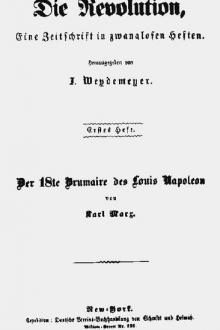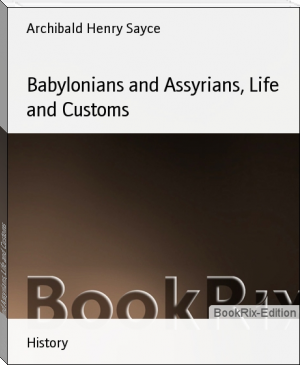Travels in France during the years 1814-1815 by Patrick Fraser Tytler (beach read book .txt) 📖

- Author: Patrick Fraser Tytler
- Performer: -
Book online «Travels in France during the years 1814-1815 by Patrick Fraser Tytler (beach read book .txt) 📖». Author Patrick Fraser Tytler
From the impression produced on our minds by the collection in the Louvre, we were led to form some general conclusions concerning the history and object of the arts of Painting and Sculpture, which we shall presume to state, as what suggested themselves to us on the contemplation of the greatest assemblage of the works of art which has ever been formed; but which we give, at the same time, with the utmost diffidence, and merely as the result of our own feelings and reflections.
The character of art in every country appears to have been determined by the disposition of the people to whom it was addressed, and the object of its composition to have varied with the purpose it was called on to fulfil.—The Grecian statues were designed to excite the devotion of a cultivated people; to embody their conceptions of divine perfection; to realise the expression of that character of mind which they imputed to the deities whose temples they were to adorn: It was grace, or strength, or majesty, or the benignity of divine power, which they were to represent by the figures of Venus, of Hercules, of Jupiter, or of Apollo. Their artists accordingly were led to aim at the expression of general character; to exclude passion, or emotion, or suffering, from their design, and represent the figures in that state of repose where the permanent expression of mind ought to be displayed. It is perhaps in this circumstance that we are to discern the cause both of the peculiarity and the excellence of the Grecian statuary.
The Italian painters were early required to effect a different object. Their pictures were destined to represent the sufferings of nature; to display the persecution or death of our Saviour, the anguish of the Holy Family, the heroism of martyrs, the resignation of devotion. In the infancy of the arts, accordingly, they were led to study the expression of passion, of suffering, and of temporary emotion; to aim at rousing the pity, or exciting the sympathy, of the spectators; and to endeavour to characterise their works by the representation of temporary passion, not the expression of permanent character. Those beautiful pictures in which a different object seems to have been followed—in which the expression is that of permanent emotion, not transient passion, while they captivate our admiration, seem to be exceptions from the general design, and to have been suggested by the peculiar nature of the subject represented, or a particular firmness of mind in the artist. In these causes we may perhaps discern the origin of the peculiar character of the Italian school.
In the French school, the character and manners of the people seem to have carried this peculiarity to a still greater length. Their character led them to seek in every thing for stage effect; to admire the most extravagant and violent representations, and to value the efforts of art, not in proportion to their imitation of the expressions of nature, but in proportion to their resemblance to those artificial expressions on which their admiration was founded. The vehemence of their manner on the most ordinary occasions, rendered the most extravagant gestures requisite for the display of real passion; and their drama accordingly exhibits a mixture of dignity of sentiment, with violence of gesture, beyond measure surprising to a foreign spectator. The same disposition of the people has influenced the character of their historical painting; and it is to be remembered, that the French school of painting succeeded the establishment of the French drama. It is hence that they have generally selected the moment of theatrical effect—the moment of phrenzied passion, of unparalleled exertion, and that their composition is distinguished by so many striking contrasts, and so laboured a display of momentary effect.
The Flemish or Dutch school of painting was neither addressed to the devotion nor the theatrical feelings of mankind; it was neither intended to awaken the sympathy of religious emotion, nor excite the admiration of artificial composition—it was addressed to wealthy men of vulgar capacities, whose taste advanced in no proportion to their riches, and who were capable of appreciating only the merit of minute detail, or the faithfulness of exact imitation. It is hence that their painting possesses excellencies and defects of so peculiar a description; that they have carried the minuteness of finishing to so unparalleled a degree of perfection; that the brilliancy of their lights has thrown a splendour over the vulgarity of their subjects; and that they are in general so utterly destitute of all the refinement and sentiment which sprung from the devotional feelings of the Italian people.
The subjects which the Dutch painters chose were subjects of low humour, calculated to amuse a rich and uncultivated people; the subjects of the French school were heroic adventures, suited to the theatrical taste of a more elevated society; the subjects of the Italian school were the incidents of Sacred History, adapted to the devotional feelings of a religious people. In all, the subjects to which painting was applied, and the character of the art itself, was determined by the peculiar circumstances or disposition of the people to whom it was addressed: so that, in these instances, there has really happened what Mr Addison stated should ever be the case, that "the taste should not conform to the art, but the art to the taste."
We soon perceived that the statues rivetted our admiration more than any of the other works of art which the Louvre presents; and that amongst the pictures, those made the deepest impression which approached nearest to the character by which the Grecian statuary is distinguished. In the prosecution of this train of thought, we were led to the following conclusions, relative to the separate objects to which painting and statuary should be applied.
1. That the object of Statuary should ever be the same to which it was always confined by the ancients, viz. the representation of CHARACTER. The very materials on which the sculptor has to operate, render his art unfit for the expression either of emotion or passion; and the figure, when finished, can bear none of the marks by which they are to be distinguished. It is a figure of cold, and pale, and lifeless marble, without the varied colour which emotion produces, or the living eye which passion animates. The eye is the feature which is expressive of present emotion; it is it which varies with all the changes which the mind undergoes; it is it which marks the difference between joy and sorrow, between love and hatred, between pleasure and pain, between life and death. But the eye, with all the endless expressions which it bears, is lost to the sculptor; its gaze must ever be cold and lifeless to him; its fire is quenched in the stillness of the tomb. A statue, therefore, can never be expressive of living emotion; it can never express those transient feelings which mark the play of the living mind. It is an abstraction of character which has no relation to common existence; a shadow in which all the permanent features of the mind are expressed, but none of the temporary passions of the mind are shewn; like the figures of snow, which the magic of Okba formed to charm the solitude of Leila's dwelling, it bears the character of the human form, but melts at the warmth of human feeling. The power of the sculptor is limited to the delineation of those signs alone by which the permanent qualities of mind are displayed: his art, therefore, should be confined to the representation of that permanent character of which they are expressive.
2. While such is the object to which statuary would appear to be destined, Painting embraces a wider range, and is capable of more varied expression: It is expressive of the living form; it paints the eye and opens the view of the present mind; it imitates all the fleeting changes which constitute the signs of present emotion. It is not, therefore, an abstraction of character which the painter is to represent; not an ideal form, expressive only of the qualities of permanent character; but an actual being, alive to the impressions of present existence, and bound by the ties of present affection. It is in the delineation of these affections, therefore, that the powers of the painter principally consists; in the representation, not of simple character, but of character influenced or subdued by emotion. It is the representation of the joy of youth, or the repose of age; of the sorrow of innocence, or the penitence of guilt; of the tenderness of parental affection, or the gratitude of filial love. In these, and a thousand other instances, the expression of the emotion constitutes the beauty of the picture; it is that which gives the tone to the character which it is to bear; it is that which strikes the chord which vibrates in every human heart. The object of the painter, therefore, is the expression of EMOTION, of that emotion which is blended with the character of the mind which feels, and gives to that character the interest which belongs to the events of present existence.
3. The object of the painter, being the representation of emotion in all the varied situations which life produces, it follows, that every thing in his picture should be in unison with the predominant expression which he wishes it to bear; that the composition should be as simple as is consistent with the developement of this expression; and the colouring such as accords with the character by which this emotion is distinguished. It is here that the genius of the artist is principally to be displayed, in the selection of such figures as suit the general impression which the whole is to produce; and the choice of such a tone of colouring, as harmonises with the feelings of mind which it is his object to awaken. The distraction of varied colours—the confusion of different figures—the contrast of opposite expressions, completely destroy the effect of the composition; they fix the mind to the observation of what is particular in the separate parts, and prevent that uniform and general emotion which arises from the perception of one uniform expression in all the parts of which it is composed. It is in this very perception, however, that the source of the beauty is to be found; it is in the undefined feeling to which it gives rise, that the delight of the emotion of taste consists. Like the harmony of sounds in musical composition, it produces an effect of which we are unable to give an account; but which we feel to be instantly destroyed by the jarring sound of a different note, or the discordant effect of a foreign expression. It is in the neglect of this great principle that the defect of many of the first pictures of modern times is to be found—in the confused multitude of unnecessary figures—in the contradictory expression of separate parts—in the distracting brilliancy of gorgeous colours; in the laboured display, in short, of the power of the artist, and the utter dereliction of the object of the art. The great secret, on the other hand, of the beauty of the most exquisite specimens of modern art, lies in the simplicity of expression which they bear, in their production of one uniform emotion, from all the parts of one harmonious composition. For the production of this unity of emotion, the surest





Comments (0)